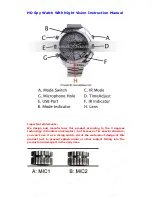
On demand, the minute repeater will strike the
hours, the quarter-hours, and the minutes which
have elapsed since the last quarter hour. One
hammer strikes the number of hours on a low-
pitched gong. Then, two hammers consecutively
strike the number of quarter-hours on the high-
and low-pitched gongs. Finally, the second ham-
mer strikes the high-pitched gong for a count of
the number of minutes that have elapsed since
the last quarter hour.
It takes the largest number of strikes – 32 in total
– to indicate the time at 12:59. Twelve low-pitched
strikes, three high-low double strikes, and 14 high
strikes.
The minute repeater of the “Sky Moon Tourbil-
lon” is a particularly fascinating implementation
of this endearing mechanism. To achieve the de-
lightfully sonorous chime in the confined space of
a wristwatch, it was necessary to develop
a new alloy explicitly for the gongs. Moreover,
both gongs are nearly twice as long as conven-
tional ones: they are literally “wrapped around”
the movement – yet freely suspended! – over a
length of one and three-quarter turns. Due to
their long-lasting reverberation and voluminous
sound, they are aptly called “cathedral” gongs.
To start the minute repeater, move the slide in
the caseband at 9 o’clock all the way to its end
stop and then fully release the slide. Do not pull
it down under any circumstances. The two ham-
mers will now strike the hours, quarter-hours,
and minutes on the high- and low-pitched gongs.
Do not restart the minute repeater until it has
completed its entire strike sequence.
Caution: Do not turn or pull the crown while
the repeater is working and for 30 seconds
thereafter. If you disregard this warning, the
repeater mechanism could sustain serious dam-
age that is not covered by the warranty.
Activating the repeater
3. Operating the minute repeater



































